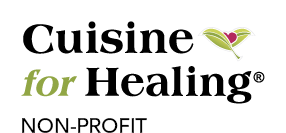Reducing food waste is a growing concern. As the population continues to rise, hunger does as well. Food waste is also a threat to food security. The United States Department of Agriculture’s Economic Research Service reported that Americans discard or waste 133 billion pounds of food each year. The Food and Drug Administration reported that 90% of Americans prematurely discard food due to misinterpretation of date labeling or due to uncertainty on how to properly store the product. The confusion around date labeling is contributing to the increase in food waste across the country, and oftentimes an increase in the grocery bill.
There is a disconnection between consumers and regulators on the understanding of date labeling of foods. It seems the question that consumers have is what “best by” or “use by” means. The answer is that the labeling on foods is just an estimate from the manufacturers. These dates are not scientifically proven. While the disconnect between the manufacturers and consumers is one factor leading to food waste, another factor is the disconnect between manufacturers and science. If food science collaborates with environmental science, then date labeling could no longer be an “estimate”. This would reduce the uncertainty that consumers have around date labeling, thus reducing food waste. It is a chain of events that starts with collaboration. Hopefully, one-day shelf life and food spoilage risk will be projected to the exact date.
While much of the collaboration lies in the hands of manufactures and food scientists, as consumers we can do our part and find ways to reduce food waste in our homes.
Here are some ways to help reduce food waste and reduce your grocery bill:
- Avoid buying more food than you need
- Store food correctly: potatoes, tomatoes, garlic, cucumbers, and onions do not need to be refrigerated
- Try preserving food like pickling, drying, canning, freezing or fermenting
- Store leftovers in a clear glass container to ensure you don’t forget the food
- Eat the skin of fruits and veggies
- Blend up stems, ends, and peels in a smoothie
- Make homemade stock (see recipe below), sauté vegetable scraps like the tops, stalks, peels or any other leftover bits
Resource: Science Daily, University of Maryland (2020, May 14th) Researchers seek to reduce food waste and establish the science of food date labeling. Retrieved from: https://www.sciencedaily.com/releases/2020/05/200514131708.htm
Vegetable Broth:
Makes 6 cups broth
| 4 | cups | Vegetable Scraps (avoid broccoli, cabbage, cauliflower) |
| 1 | Tablespoon | Garlic |
| 1⁄4 | cup | Herbs |
| 6 | cups | Water |
Add all ingredients into a medium or large pot, add water to completely submerge all the scraps, and simmer for 45 minutes to an hour. Check broth at 30 minutes and add additional water if needed. After your stock is done simmering pour it through a fine-mesh strainer to remove all the large particles.
If you would like a dark rich broth you can roast your vegetables at 350 degrees for 10 to 15 minutes before simmering.
Store broth in the refrigerator for up to one week, or freeze for up to one month.










